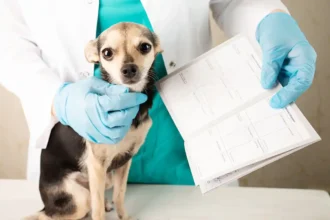Introduction
Is your dog acting unusually quiet or detached? Just like humans, our canine companions can experience emotional lows that affect their well-being. As pet owners, we’re often the first to notice when something’s not quite right. Recognizing depression in dogs can be tricky—after all, they can’t tell us how they feel. But with the right knowledge, you can identify the signs and take actionable steps to bring joy back into your furry friend’s life.
In this guide, we’ll explore the four key warning signs of dog depression, discuss common causes, and provide practical tips to help your pet recover. Backed by expert insights and trusted resources, this article is designed to empower you with the tools to support your dog’s emotional well-being. Let’s dive in.
Understanding Dog Depression
Dogs, like humans, experience a wide range of emotions. While a dog’s joy is contagious, their sadness can be equally profound. Dog depression is a real and concerning issue, characterized by noticeable changes in behavior, mood, and energy levels.
According to veterinarians, depression in dogs can be influenced by a variety of factors, including major life changes, loss of a companion, or even seasonal patterns. Just as humans may feel a dip in mood during darker, colder months, some dogs might exhibit similar behaviors. This is often referred to as Seasonal Affective Disorder (SAD) in pets.
Some dogs may also mirror the emotions of their owners. If you’re feeling stressed or upset, your pet may pick up on these cues and exhibit symptoms of depression. Recognizing this interplay between human and dog emotions is crucial for identifying and addressing the root causes of their sadness.
Related: Why Regular Checkups Are Important to Your Pet’s Health

4 Warning Signs of Dog Depression
1. Lethargy
- A normally energetic dog who suddenly becomes sluggish or reluctant to play may be showing signs of depression. Pay attention if your dog spends more time sleeping or lying around without interest in usual activities.
2. Changes in Appetite
- Depressed dogs may experience a noticeable decrease or increase in appetite. A loss of interest in their favorite treats or excessive eating to cope with stress can both indicate emotional distress.
3. Withdrawal from Social Interaction
- Dogs are naturally social animals. If your pet avoids contact with family members or other pets, it’s a clear signal that something is wrong.
4. Destructive Behavior
- Depression can manifest as chewing furniture, scratching doors, or other destructive actions. While these behaviors can be linked to boredom, they might also signify deeper emotional issues. Depressed dogs might also stop engaging in activities they once enjoyed, such as fetching a ball or going for a walk.
Related: 11 Warning Signs You Should Take Your Dog to the Vet
Common Causes of Dog Depression
- Environmental Changes: Moving homes, the arrival of a new baby, or the loss of a loved one can all disrupt a dog’s routine and emotional stability.
- Loss of a Companion: Whether it’s a fellow pet or a human family member, losing a companion can deeply affect your dog.
- Lack of Stimulation: Dogs need mental and physical activity to thrive. A lack of exercise or engagement can lead to boredom and, eventually, depression.
- Medical Conditions: Sometimes, underlying health issues like pain or illness contribute to mood changes. Veterinarians stress the importance of ruling out physical ailments, as they may present symptoms similar to depression.
- Chronic Stress: Consistent exposure to stressful situations, such as a chaotic household or frequent loud noises, can take a toll on your dog’s mental health, leading to depressive behaviors.
Related: Understanding Separation Anxiety in Dogs

How to Help Your Dog Recover
Helping your dog recover from depression requires patience, consistency, and sometimes professional intervention. Here are some actionable steps:
- Increase Physical Activity: Regular exercise not only boosts your dog’s physical health but also releases endorphins that can improve mood. Long walks or engaging play sessions can help your dog rediscover joy.
- Provide Mental Stimulation: Puzzle toys, training sessions, or even a game of hide-and-seek can keep your dog engaged and happy. Experts recommend incorporating activities that challenge their problem-solving skills.
- Create a Calming Environment: Ensure your dog has a safe, quiet space where they can relax. This can be particularly helpful for dogs prone to stress or anxiety.
- Offer Positive Reinforcement: Reward your dog for small victories, like engaging in play or eating a full meal. This encourages a return to normal behavior.
- Seek Veterinary Help: If symptoms persist, consult your veterinarian to rule out any medical conditions and discuss treatment options, including potential therapies or medications tailored for canine depression.
Related: 9 Simple Ways to Make Your Dog Happy
Preventing Dog Depression
Prevention is always better than cure. To keep your dog emotionally balanced, consider the following tips:
- Establish a Routine: Dogs thrive on predictability. Regular feeding, walking, and playtimes create a sense of security.
- Foster Strong Bonds: Spend quality time with your dog to strengthen your connection and reassure them of your presence.
- Schedule Regular Vet Visits: Regular checkups can catch health issues early and ensure your dog stays physically and emotionally well.
- Provide Enrichment: Rotate toys, explore new walking routes, and introduce new experiences to keep your dog’s life exciting.
- Monitor Your Own Mood: Your dog often mirrors your emotions. Staying calm and positive can help create a stable environment for them.
Related: Deepening the Bond: 7 Proven Strategies to Strengthen Your Connection with Your Pet
FAQ: About Dog Depression
Can dogs really get depressed?
+Yes, dogs can experience depression due to various factors such as changes in their environment, loss of a companion, or lack of stimulation. Recognizing the signs early is key to helping them recover.
What are the first signs of depression in dogs?
+The early signs include lethargy, changes in appetite, withdrawal from social interaction, and sometimes destructive behavior.
How can I differentiate between boredom and depression in my dog?
+While both may result in destructive behavior, boredom typically resolves with increased stimulation or exercise. Depression, however, may persist even with these interventions and often includes other signs like appetite changes and withdrawal.
Should I consult a vet if I suspect my dog is depressed?
+Absolutely. A veterinarian can help rule out underlying medical conditions and recommend treatment options tailored to your dog’s needs.
Are there medications for dog depression?
+In severe cases, veterinarians may prescribe medications to help manage symptoms. However, behavioral interventions are often the first line of treatment.
Conclusion
Dogs rely on us to notice their needs, both physical and emotional. By understanding the signs of depression, addressing the underlying causes, and implementing effective recovery strategies, you can help your furry friend return to their happy, tail-wagging self.
Don’t forget to share this guide with fellow dog lovers to spread awareness. And if you suspect your dog is struggling emotionally, take action today to ensure they live their best life.
Additional Resource: Download our free Dog Emotional Health Checklist.
Is your dog acting distant or down? 🐾💔
Learn the warning signs of dog depression and discover actionable steps to bring back their tail-wagging joy. 🐶✨
Share this guide with your fellow dog lovers and help spread awareness ❤️












